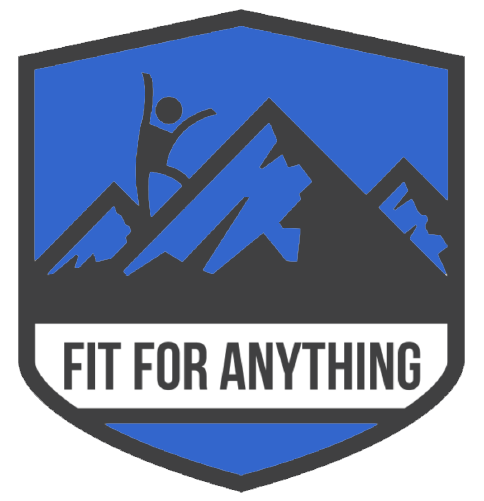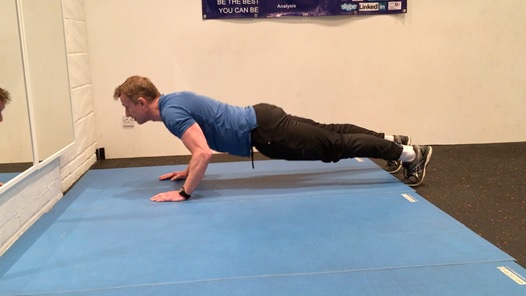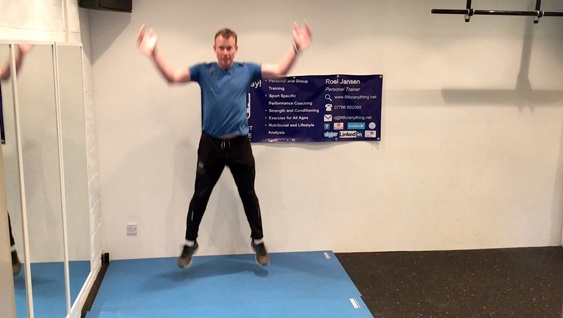Exercise your body, anywhere!
This set of exercises are convenient and great when you don’t have much time to exercise.
Get in tune with your body and do these 10 bodyweight exercises which can assist in reaching your training goals. It doesn’t have to be complicated but you will need to be dedicated and exercise regularly as consistency will shape your body and increase your metabolic rate.
All you need to achieve to shape your body is, well, your body.
There are many variants of the exercises shown which we won’t cover this time. The average time to complete all these exercises is 25 minutes to fatigue with good form but it can vary greatly from person to person as it depends on factors such as age and ability. Where confident feel free to enhance exercises or modify them where needed. These exercises provide a guide only.
Please ensure your surroundings are safe and clear, you are fit enough to undertake these exercises, you have completed a warm up and if unsure please do not perform these exercises as we can’t be held responsible for any damage to property or health.
Enjoy and get fit today!
1. Squats
How to
• Stand with feet aligned and about shoulder width.
• Slightly shift your bodyweight to the back of your body by rotating your hips, moving your bottom back and engage your core.
• Keep your face straight or look up whilst drawing your shoulders back to avoid your back from arching whilst moving down and up.
• To assist balance you may want to use your arms and dig your heels more firmly into the floor.
Why
Squats build up not only hip, gluteal and leg strength, but also elevates your heart rate and can improve your overall level of fitness. Try to go down and squat as low as possible whilst keeping good form in order to maximise the use of muscles stated.
2) Press-ups
How to
• Set up with your weight supported on your toes and hands equal distance apart and directly underneath your shoulders, keep your body straight.
• Try to keep your elbows in line with your shoulders so they are close to your body.
• Take care to keep your core engaged so a reasonably straight line forms between your head, glutes and heels.
• Lower your body until your chest is an inch from the ground then explosively drive up by fully extending your arms.
• If you are not able to do this yet, try the same movement, but standing with your hands against a wall.
Why
Pressed for time? Perform your repetitions in good form to burn fat and boost strength. This exercise works most muscles in your body, it squeezes your glutes and abs too. That will assist in creating body tension to maximise efficiency during the execution of the exercise.
3) Burpees
How to
• Start with your feet shoulder-width apart and squat down until your thighs are parallel to the floor.
• From the bottom of the squat, place your hands on the floor and kick your legs out behind you into a press-up position.
• Push up until your arms are straight and then tuck in your legs at the bottom of the squat position.
• Drive upwards through your heels until you are about five inches off the floor and then repeat.
Why
By activating muscles almost everywhere on your body, the burpee gives you a massive calorie burn due to the enormous effort required. The magic usually happens when you go out of your comfort zone. Please ensure you perform burpees with decent form as poor form may lead to possible injury.
4) Single Leg Gluteal Bridge
How to
• Lie on your back with one leg raised in the air.
• To enhance the use of the back of your legs, your hamstrings in particular, you may want to dig your heel into the floor.
• Thrust forward and raise your hips off the ground as high as you can.
• Slowly lower yourself to the floor.
• Clench your glutes at the top of the repetition to activate more muscle fibres.
• Ensure you perform each leg to fatigue in good form, perhaps count your repetitions to track performance.
Why
As well as working your legs, these single leg glute bridges will challenge your entire posterior chain (the back of your body). Your bottom should be your strongest muscle in your body. Building strength in these areas improves stability and posture. Bridges in general also assist in relieving any prolonged back pain.
5) Scales
How to
• Stand straight and shift bodyweight onto one leg, then stand on one leg.
• Pick a focus point straight in front of you and lean forward whilst keeping your balance as much as possible.
• Use your arms where needed to assist balance and composure.
• Keep your body straight (shoulders, hips), in particular, the supporting/standing foot and knee.
• Move your body forward and reach a horizontal pose, return and remain on one leg and repeat until fatigue. Repeat with the other leg.
Why
The front and back scales can be used both as an assessment tool, and as a method of improving your strength, flexibility, and balance. When clients complain of poor balance or leg strength, the scales are excellent to assess both proprioception and weaker stabilisers. You may want to take off your shoes and socks for this one for improved assessment purpose.
6) Back Extension
How to
• Lie on your front on an even floor
• Keep your head relaxed throughout this exercise
• Hands to the side of the head, no pulling on the head
• Lift your elbows so shoulder blades are pulled backwards.
• Lift your lower and upper body in a controlled manner equally of the floor as much as possible and squeeze your glutes, return slowly and controlled to floor and repeat.
Why
This exercise is basic and will strengthen your back and it assists in preventing lower back issues in particular. Think of the core as a square box, all sides of the box need to be strong and stable. Back extensions help strengthen the often-overlooked posterior side. Engage your entire core and extend your upper body until it is in line with your legs. Avoid extending past 180 degrees (where the upper body is higher than the legs) to limit compressive forces on the lumbar spine (lower back).
7) Plank
How to
• Lie straight on your front on floor and have your elbows positioned directly below your shoulders.
• Engage the quads, glutes and core, keep your head relaxed, while pushing the floor away through the toes and forearms in a controlled manner.
• Squeeze your abdominals towards your spine to maximise core engagement and to avoid or reduce any arch in your lower back.
• Hold the plank as long as you can whilst maintaining proper form, return to the floor in a controlled manner.
• If you struggle holding this, you can lower your knees as demonstrated in the video.
Why
The plank enhances core stability. The first function of the core is to stabilise and to protect the spine, tension rather than flexion. Once you can hold the plank for about a minute and basic core strength has been established add plank variations to mix things up.
8) Mountain Climbers
How to
• On your hands and knees with hands shoulder width and feet in line with your hips.
• Engage your core throughout, lift one foot off the floor and drive this leg's knee towards your chest and return, do the same with your other leg and repeat.
Why
This core exercise combines the plank, core stabilisation and alternating knee drives towards your chest. It increases your heart rate, it challenges mainly your shoulders, abdominals and your legs. A great calorie burner too. Please maintain proper alignment throughout the exercise and keep your shoulders and wrists perfectly stacked.
9) Walk Outs
How to
• Stand with your feet hip-width apart.
• Bend over and place your hands on the floor just in front of your feet, ideally only allow a limited bend of your legs whilst doing this.
• Shift weight onto your hands and begin to walk them forward in a controlled manner.
• Brace your core, squeeze your glutes, and keep a flat back as you walk.
• Walk out until your hands are beneath your head.
• Your body should ideally form a straight line from your shoulders to your feet. Reverse direction back to starting position and roll your shoulders back, repeat.
Why
The walkout improves total core strength through an entire range of motion. The movement also improves some flexibility (mainly in hamstrings) and upper body strength, particularly in the shoulders.
10) Spider
How to
• From a press-up position, raise one foot off the floor and bring your knee up towards your elbow.
• Option to pause then return to the starting position and repeat on the other side.
• Crunch your core at the top of the rep to bring your knee even closer to your elbow to get more out of your abdominals.
Why
Great for sculpting, challenge abdominals and obliques to improve your physique. This movement crushes your core while also targeting your legs, arms, chest and shoulders.
P.S.
There are so many bodyweight exercises so you have plenty to choose from. The above 10 exercises have no need for equipment or wall, can be done anywhere so hence the exercise choices made. It can provide a basic guide to exercise.
For further advice and/or information please contact me via www.fitforanything.net.
Many thanks
Roel










